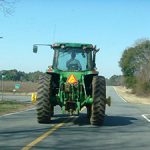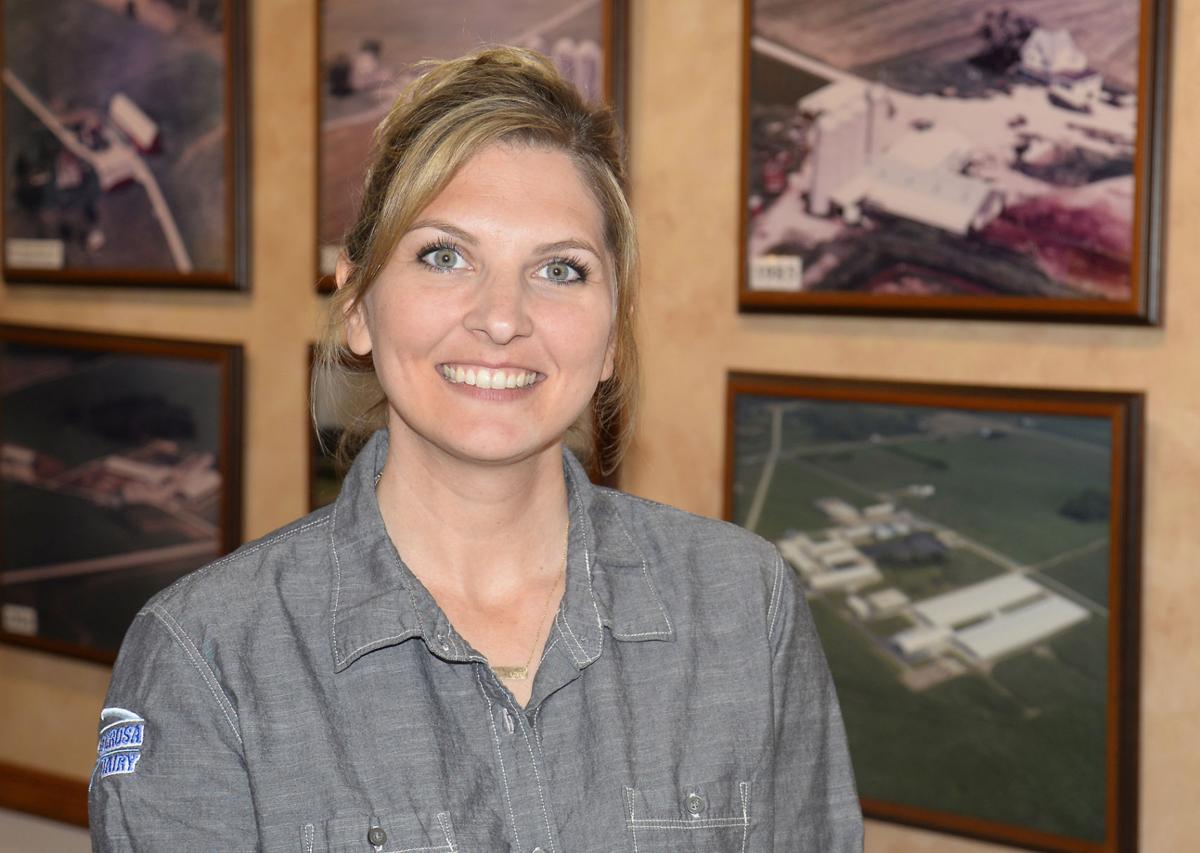Dr. Niles has been a featured speaker, both nationally and internationally on topics relating to proper cow care, in particular, maternity care on modern dairy farms. With a diverse professional background, Dr. Niles is currently the Operations Manager for the Pagel Family Businesses, overseeing two Kewaunee county dairies, Dairy Dreams, LLC and Pagel’s Ponderosa Dairy, LLC. Dr. Niles serves as president of Peninsula Pride Farms, a farmer lead environmental stewardship organization in Kewaunee and southern Door Counties. He participates in the following organizations: AVMA; AABP; DCWC; DBA and NMC.
Introduction
The standards, practices, and norms of modern dairy treatment practices bear almost no similarity to the practices that I encountered upon leaving veterinary school and starting dairy practice in 1982. Basically, everything has changed, most for the better. In 1982, the largest herd I serviced had 80 cows. Today, that could be the hospital pen in a 5,000-cow dairy. Early on, most antibiotic treatments were actually administered by the veterinarian. On many dairies today, that is a rare exception. Treatment protocols existed mainly in the practitioner’s head and could vary day to day for a variety of reasons. Written record systems, when used at all, were often no more sophisticated than an index card stuck in the cow trainer above the patient. There were several major disrupters that changed these norms over time. Dairies modernized and expanded. As a consequence, it was not practical for individual treatments to be administered by a veterinarian. At the same time, the training, focus, and skill sets of herd and hospital managers allowed these treatments to be done with proper discipline without immediate veterinarian supervision. Regulatory changes, such as the Animal Medicinal Drug Use Clarification Act (AMDUCA), focused a much brighter light on the legal limitations and responsibilities of veterinarians, as well as better defining the veterinarian-client-patient relationship (VCPR). No longer could veterinarians design treatments “on the fly.” Equally important, society changed around us. The 1% of the US population that still farms lost touch with the 99% who do not. The 99% want to know how animals are treated, why they are treated, and how their families can be protected from impurities in their food supply. None of this was on my veterinary radar in 1982.
Basic Principles of Designing a Treatment System
The bedrock principle of designing a treatment system for implementation on a large modern dairy starts with clearly designating the exact individuals who will be implementing any treatments. This obviously includes the veterinarian with the VCPR for the herd. As mandated by AMDUCA, this is the
only person who can design treatment protocols for prescription medications for use on the farm. This also includes not only the fresh cow and hospital managers, but all the other people who might be involved in administering antibiotics, identifying animals to be treated, recording treatments and observing restrictions, such as meat and milk withholding. All of these individuals will need some amount of training. If the dairy can’t identify who all these individuals are, that is where the herd veterinarian needs to start. The next step in the process is to collect all individuals who have any responsibility for making treatment decisions, in order to agree on a finite list of diseases and treatments that will be confronted by the treatment team. It didn’t seem like it on the day I received my Doctor of Veterinary Medicine degree, but there is actually a very small number of disease conditions of interest to a dairy treatment crew. The group needs to start out by making this list. Leadership by the veterinarian
is important here. Once the disease entities of concern are identified, a list of approved treatment protocols for each disease is the next step. The veterinarian obviously has a crucial role here. Treatments need to be legal, appropriate, and within the skill sets of the treatment crews. Once again, there may
be several different treatment protocols approved, such as a primary and secondary intramammary treatment tube. For each, the dose, duration of treatment, and appropriate withhold times need to be established. This meeting should be in the form of a discussion, so that any legitimate ideas can be discussed. However, at the end of the day, no treatments can be conducted on the dairy that is not established on this list. Once a treatment protocol has been assigned, it is automatically established as to what follow-up treatments are scheduled, what day the cow is to be reexamined, and what day it will be tested for drug residues. This even carries out to meat residues. The day the protocol is assigned to a cow, we already know what its meat withhold clear date will be. The disease and treatment lists should be reviewed occasionally and updated as treatment options are added or removed. The bedrock principle has to be that no treatments can be administered that differ from the established treatment protocols in drug type, dose, duration or withhold. No “cowside” modifications are permitted. One final point on
the treatment protocol table; it is a very good idea for the veterinarian of record to conduct an occasional audit done by another veterinarian. The second veterinarian could be a partner, pharmaceutical tech service or even a neighboring practitioner. This can often identify a minor protocol breach that has unintentionally crept into the system.
Implementing the Program
Once all the written protocols are established and agreed to, the details of practical implementation need to be established. How does the treater know that he or she is treating the right cow? If the hospital pen is loaded on a carousel to be treated in between shifts, there could be significant time pressure to get treatments done. The treater needs to know with 100% accuracy which teat is to be treated with which
medication, which udder needs to be checked for treatment response, which needs to be sampled for residues. An error here can be catastrophic. In our herds, we use a DC305 treatment list that shows all treatments and checks planned for that day in the hospital pen. As the technician identifies a cow, the list will immediately tell him what action is necessary. I also strongly recommend an automated system of physical ID. On our parallel parlor, we scan the cows in for treatment as they load into the parlor and immediately resort the hospital list to show cows in the order in which they are standing. In the rotary parlor, we put leg bands with an RFID tag attached on the back legs of cows entering the hospital. These tags are scanned from behind the cow, so the treated knows what action to take. We find this far safer than a visual identification by a human. As cows prepare to be moved out of the hospital pen, they must be tested for antibiotic residues. The purpose here is not to double check the established withhold times
determined when a drug is approved by the Food and Drug Administration. Instead, this is our final protection against releasing a cow that has been accidentally treated outside its intended protocol. Finally, a cow’s meat hold date is also established the moment the treatment protocol is entered into the computer. That date stays with the cow record. As we make a list of beef cows to be sent to slaughter on a given day, our list automatically includes her meat withhold date. That gives us one final check to make sure a cow is not being sent too soon.
Conclusion
The transformation in the dairy industry from small farms with hands-on treatments delivered by the veterinarian, to large herds with dedicated treatment teams would seem like a recipe for residue disaster. Instead, when training protocols and procedures are in place, we can end up with a system that is actually safer and more disciplined than the traditional model. There is both a serious responsibility on
the veterinarian’s shoulders in such a program, as well as a tremendous opportunity to provide value and leadership to a key client.
 -Dr. Niles
-Dr. Niles









 -Dr. Niles
-Dr. Niles Madison, Wis (March 5, 2019)- Pagel’s Ponderosa Dairy, LLC, Kewaunee dairy farm and farmstead cheese producer, received a bronze medal for their Farmstead Cheese Curds at the World Championship Cheese Contest. The contest was held March 3-5 at Monona Terrace in Madison, WI.
Madison, Wis (March 5, 2019)- Pagel’s Ponderosa Dairy, LLC, Kewaunee dairy farm and farmstead cheese producer, received a bronze medal for their Farmstead Cheese Curds at the World Championship Cheese Contest. The contest was held March 3-5 at Monona Terrace in Madison, WI.